Burrs are usually prickly fruit envelopes, but they can also be seeds or an infructescence.
Plants with burrs have advantages that not many people know. Burrs have earned a reputation for being quite annoying for people, but to plants, they have many benefits.
By clinging to clothes, skin, or animal fur, burrs transport seeds and thus allow the plant to colonize new areas. This dispersal mechanism is called epizoochory and it is often very efficient.
Burrs are also a form of defense against herbivores, which they repel thanks to their sharp spines. These can often cause irritation, if not more serious damage, especially to grazing animals.
Burrs can also puncture tires and clog agricultural equipment, but they are not all negative. Some plants with burrs are edible or have been used for different purposes, such as fabric fulling and basket weaving.
There’s also another notable benefit of burrs: they were the inspiration for the invention of Velcro.
It seems that it was burdock’s burrs that a Swiss inventor mimicked to develop the hook and loop fastener that has become ubiquitous in the years since its invention.
Let’s jump right into it and list down the 11 plants with burrs that you need to know and identify.
- Related Article: Different Types of Houseplants
1. Jumping Cholla (Cylindropuntia Fulgida)
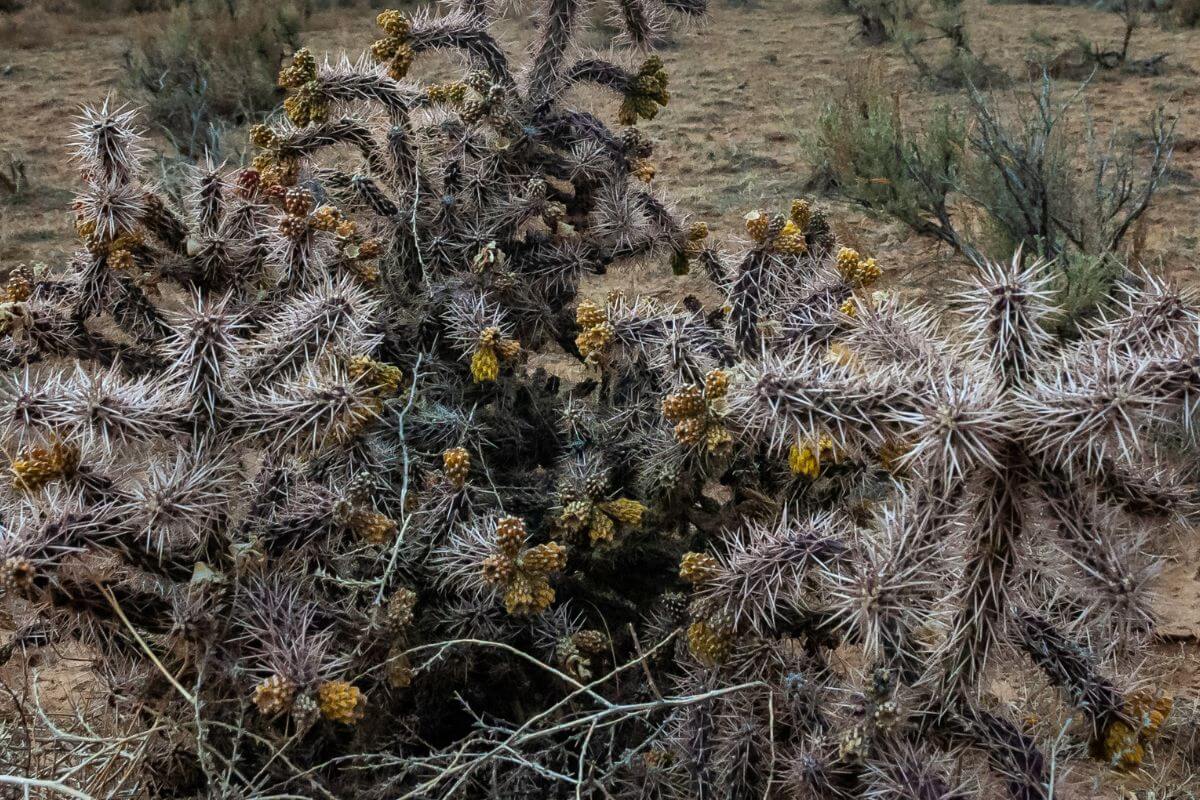
The Jumping Cholla is a cactus native to the Southwestern United States.
There are over 20 cholla cacti, infamous for their barbed spines that have earned them the name of “cacti that shoot needles”.
Fortunately, these plants don’t have the ability to shoot their needles, even if it may seem like they do.
The glochids of the jumping cholla, which are clusters of spines, easily detach from the parent plant and cling to skin or clothing.
Their long, hook-like spines can penetrate deeply into the skin and be difficult to remove, not to mention, painful.
Despite being quite annoying plants, jumping chollas are some of the most beautiful desert chollas.
They can grow to 15 feet tall and produce green/yellow or orange flowers, usually in the spring.
2. Puncture Vine (Tribulus Terrestris)
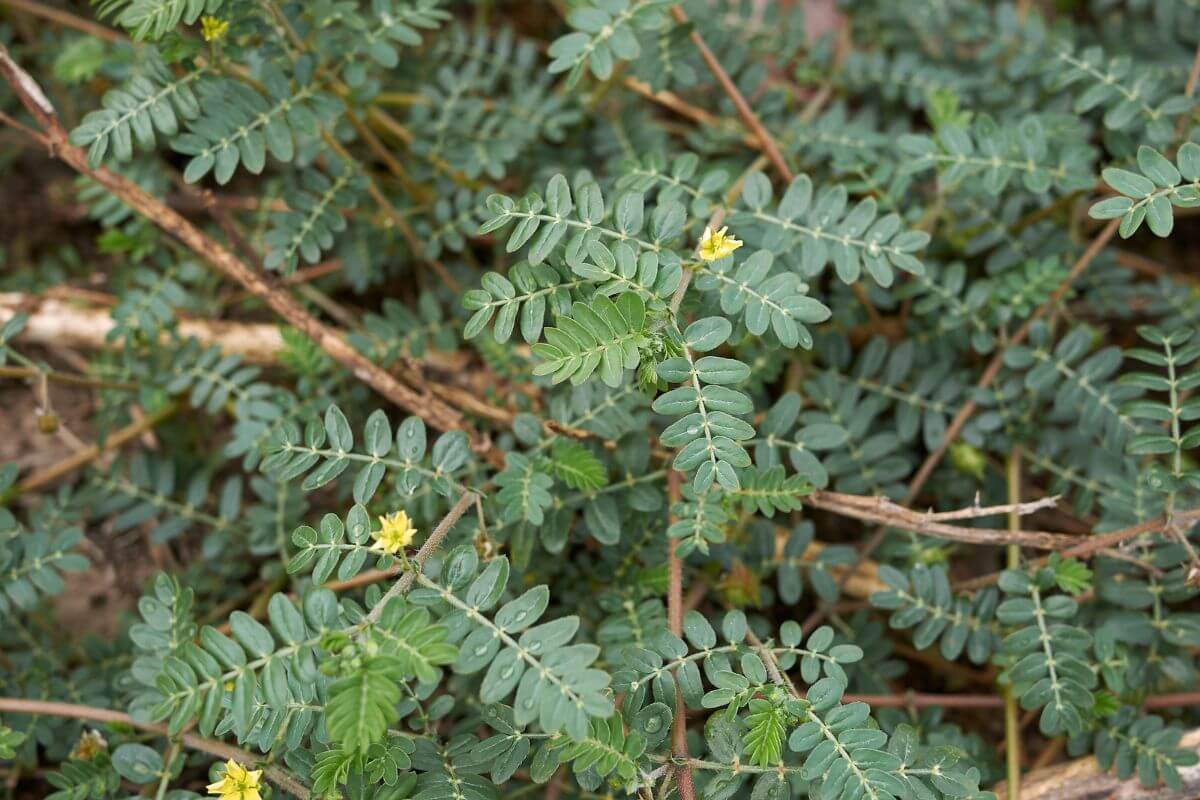
Puncture vine or goat head is an annual plant native to southern Europe, now naturalized in many areas of the tropics and sub-tropics. In the United States, it is widely found in disturbed areas of California.
This plant thrives in difficult conditions characterized by high temperatures and dry soil.
It has earned its name because of its spiky seedpods which have the ability to penetrate not only the skin but also hiking boots and bicycle tires as well.
This tactic is what allowed the puncture vine to spread so widely, using people and animals to carry its seeds.
One interesting fact about this plant is that it is known to be an aphrodisiac. And unlike many claims, this one is backed by science.
Studies have shown that the goat head can contribute greatly to male sexual function. However, due to its toxic compounds, this should be taken sparingly and with much caution.
Other studies have found that this species could be useful for the treatment of other conditions, such as urinary stones, Parkinson’s disease, malignant melanoma, liver and eye diseases, and benign prostatic hyperplasia.
3. Hedge Parsley (Torilis Arvensis)
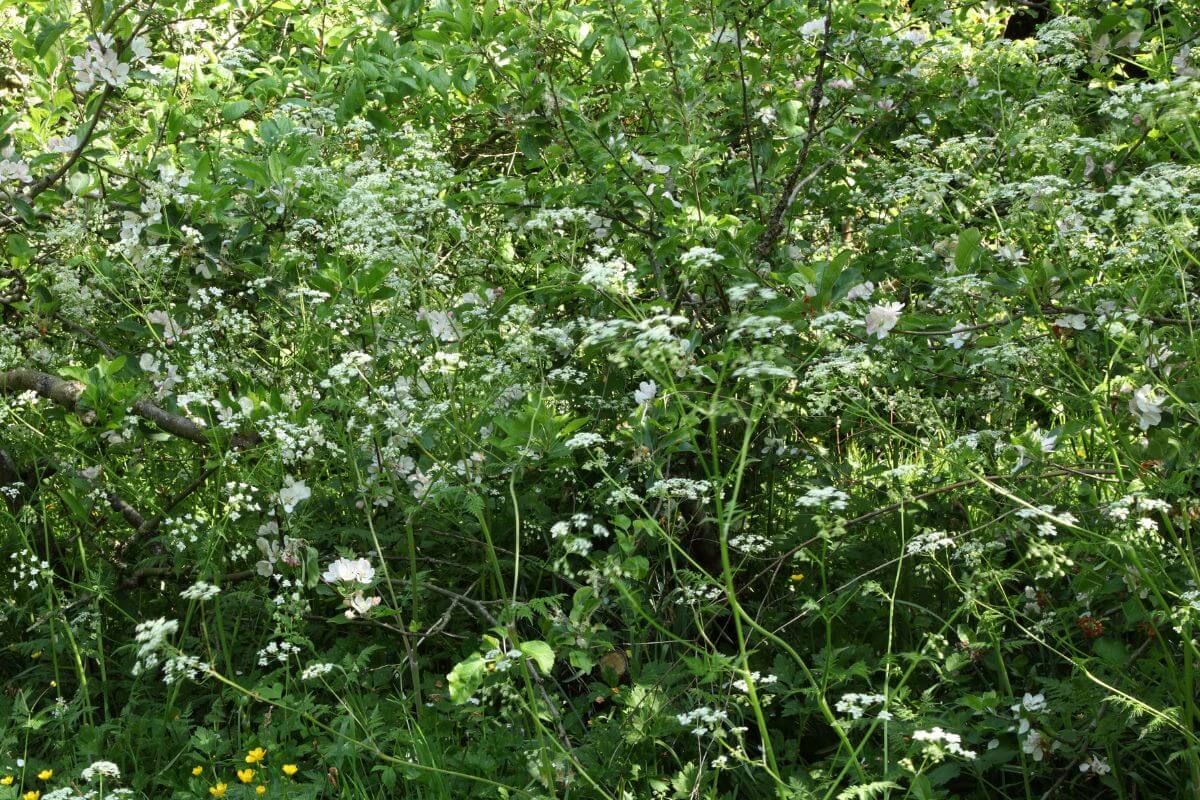
Also known as Spreading Hedge Parsley, this weed native to Europe is now widespread in the US. It thrives in disturbed sites, pastures, and fields and is considered an invasive specie.
It can be quite an annoying plant because of its tiny fruits covered in soft spines. These attach quite easily to clothing and animal fur and can sometimes injure the eyes or ears.
This hedge parsley is a hardy plant and can survive in the toughest of conditions. It can tolerate both full sun and partial shade and can reach 2 feet tall.
This plant can easily take over spacious land, outgrowing other native plant species.
4. Devil’s Claw (Proboscidea Louisianica, Proboscidea Parviflora, Pisonia Spp.)
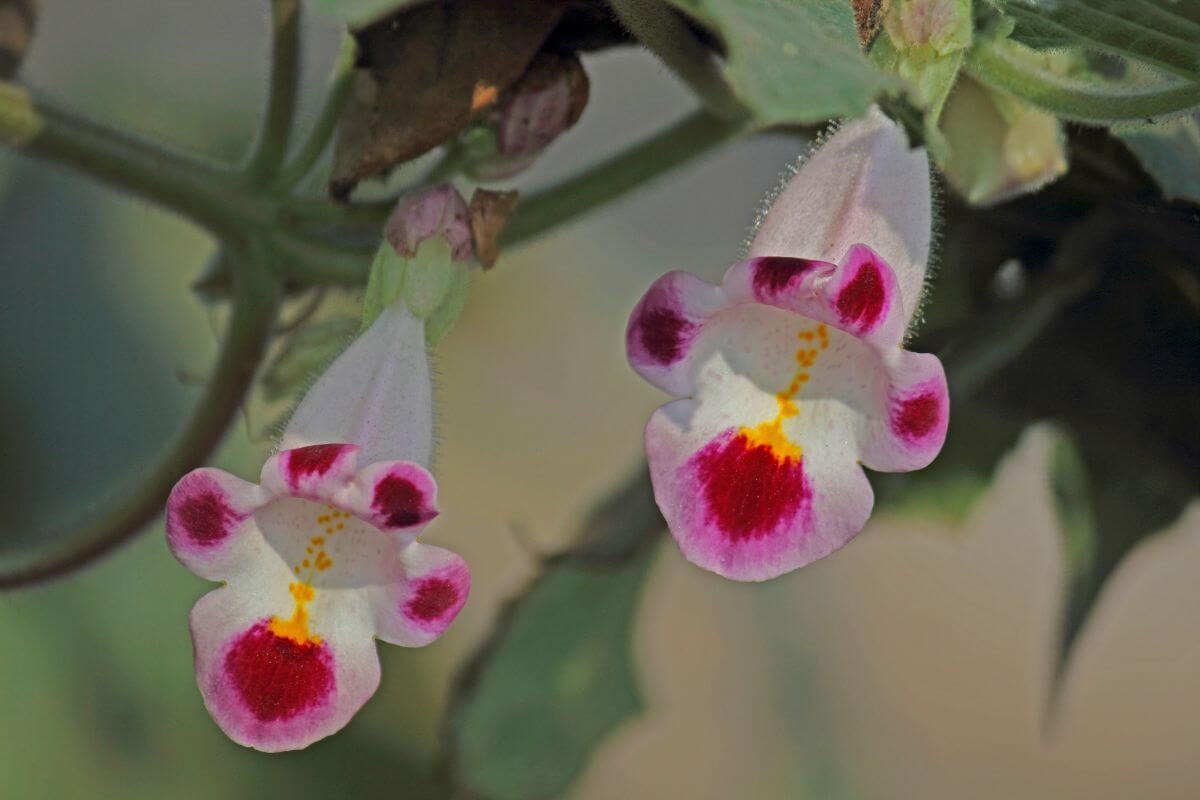
The name Devil’s Claw is applied to different plants, most of them from the Proboscidea, Pisonia, and Harpagophytum genus. The first two are native to North America, while some Harpagophytum plants are from southern Africa.
What they all have in common are their seed pods with long hooks. These can catch on animals’ feet to get carried around and get dispersed.
Another feature of the Devil’s Claw is the slime that covers its leaves and stems. This substance leaves a yellow stain that sticks to surfaces.
Despite being obviously dangerous, these plants have been used for centuries for basket weaving and as a source of food.
Its fruits are edible after steaming and the seeds were an important source of fat for the Hia-Ced O’odham and the Tohono O’odham tribes.
5. Beggar’s Ticks (Bidens Frondosa)
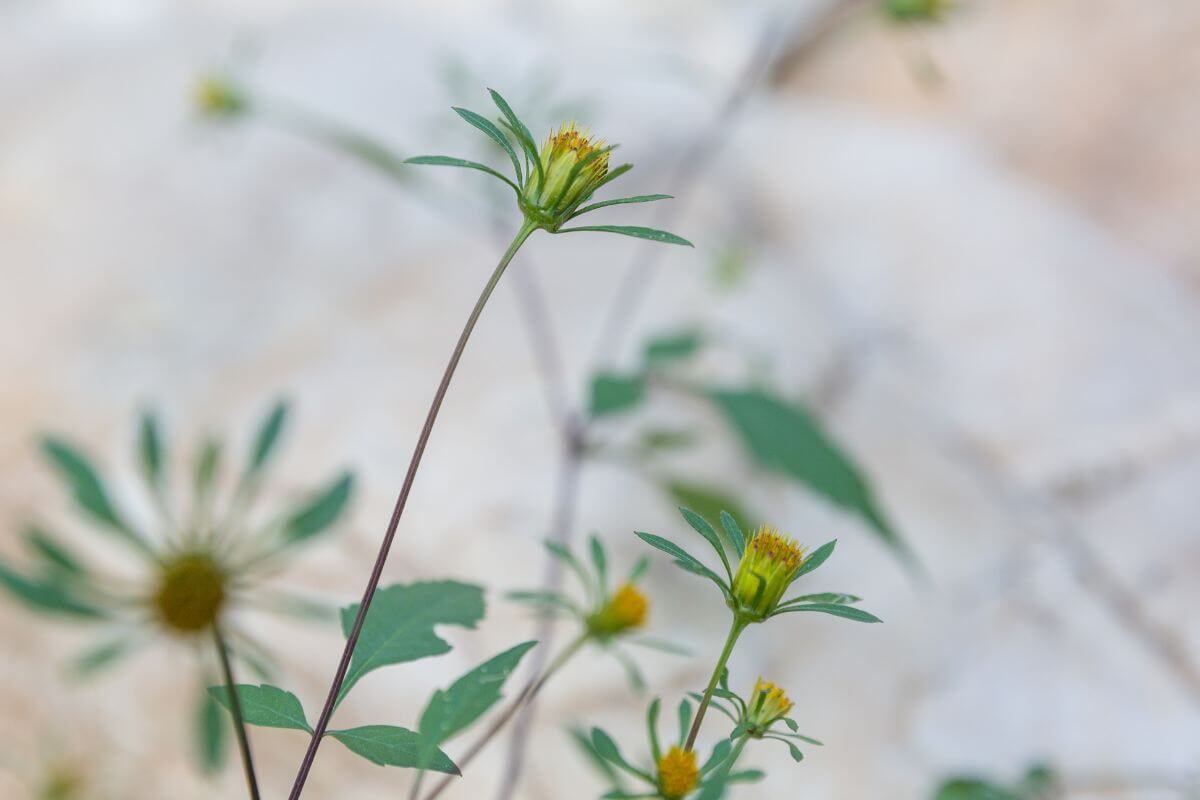
Beggar’s Ticks is a plant native to tropical America that has long awns with tiny barbs that cling to clothing and animal fur.
There are a few similar species present in North America. B. Frondosa is the most common and has colonized many waste areas. It favors wet and moist environments, such as marshes, swamps, borders of lakes, and canal banks.
A similar species is the hairy beggar’s tick, B. Pilosa, which has burrs that resemble an insect in shape. Native to tropical America, it is now widespread all over the world. This plant is a nuisance for farmers as it can carry diseases.
Other species include purple-stem Beggar’s Ticks (B. Connata), Three-lobed Beggar’s Ticks (B. Tripartita), and the largest one, Big Devil’s Beggar’s Ticks (B. Vulgata).
6. Common Burdock (Arctium Minus)
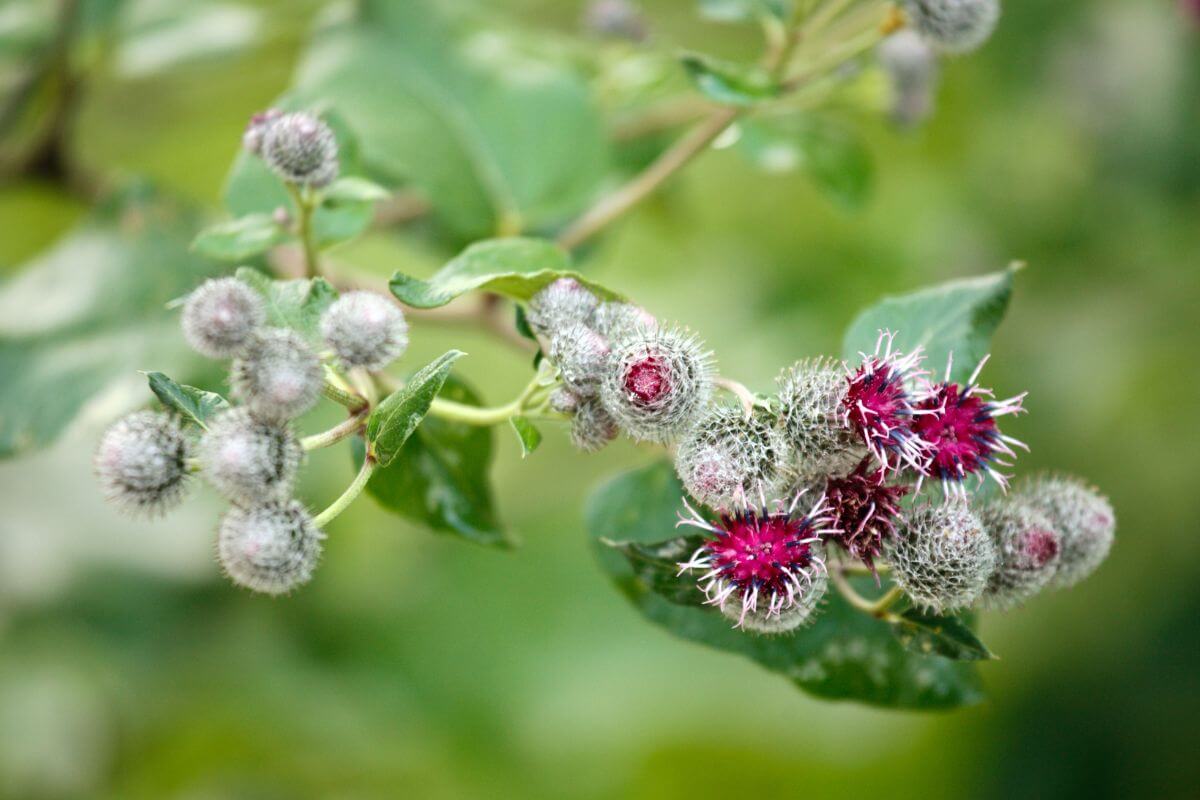
The Common Burdock Plant, also called Lesser Burdock or wild rhubarb, is native to Europe but it can now be found almost anywhere in the United States, as well as in certain areas of South America and Australia.
It is a biennial weed with red-purple thistle-like flowers on top of a burr with hooked bracts.
It’s quite aggressive and it easily invades abandoned areas, but also fields and pastures. Due to its deep roots that reach one foot in length, it’s a difficult plant to get rid of once it’s established.
It’s also very productive, with one single plant being able to make 15,000 seeds. These can be spread by the wind, but their main tactic is to latch onto animals thanks to the sharp hooks.
Some parts of Asia cultivate this for food as its root can be eaten before it becomes too fibrous. It has a surprisingly sweet flavor, while the interior of the stems can be cooked after peeling.
7. Sandburs (Cenchrus Spp.)
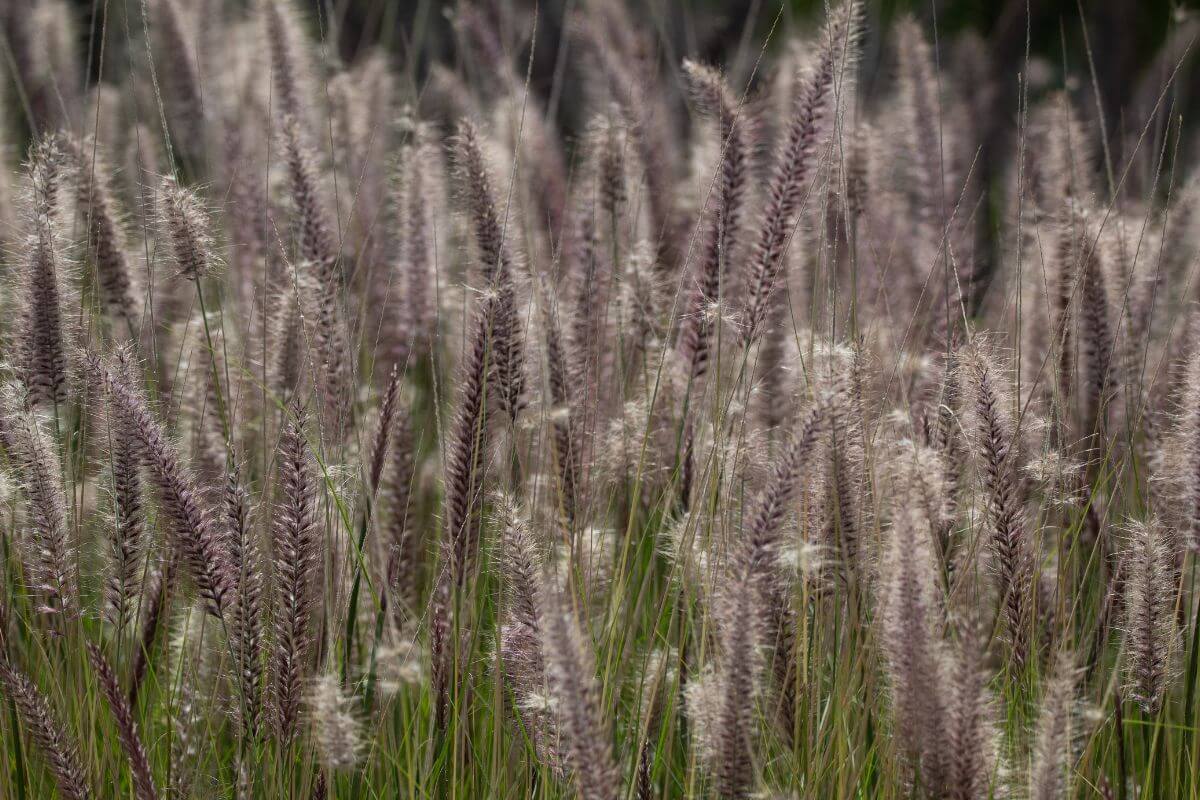
Sandburs are annual flowering plants that have evolved small burrs in vertical clusters. These have sharp hooks that can pierce through the skin in order to be transported.
Sandburs need warm and sandy soils and can grow to be 20 inches tall.
Here are some of the most common species of Sanburs:
- High Coastal Sandbur (C. Spinifex) – produces purple burrs with up to 40 hooks in early summer
- Upright Southern Sandbur (C. Echinatus) – with burrs that have 40 to 60 spines
- Longspine Sandbur (C. Longispinus) – with burrs that start appearing in July and can have up to 50 hooks.
8. Bur-reeds (Sparganium Spp.)
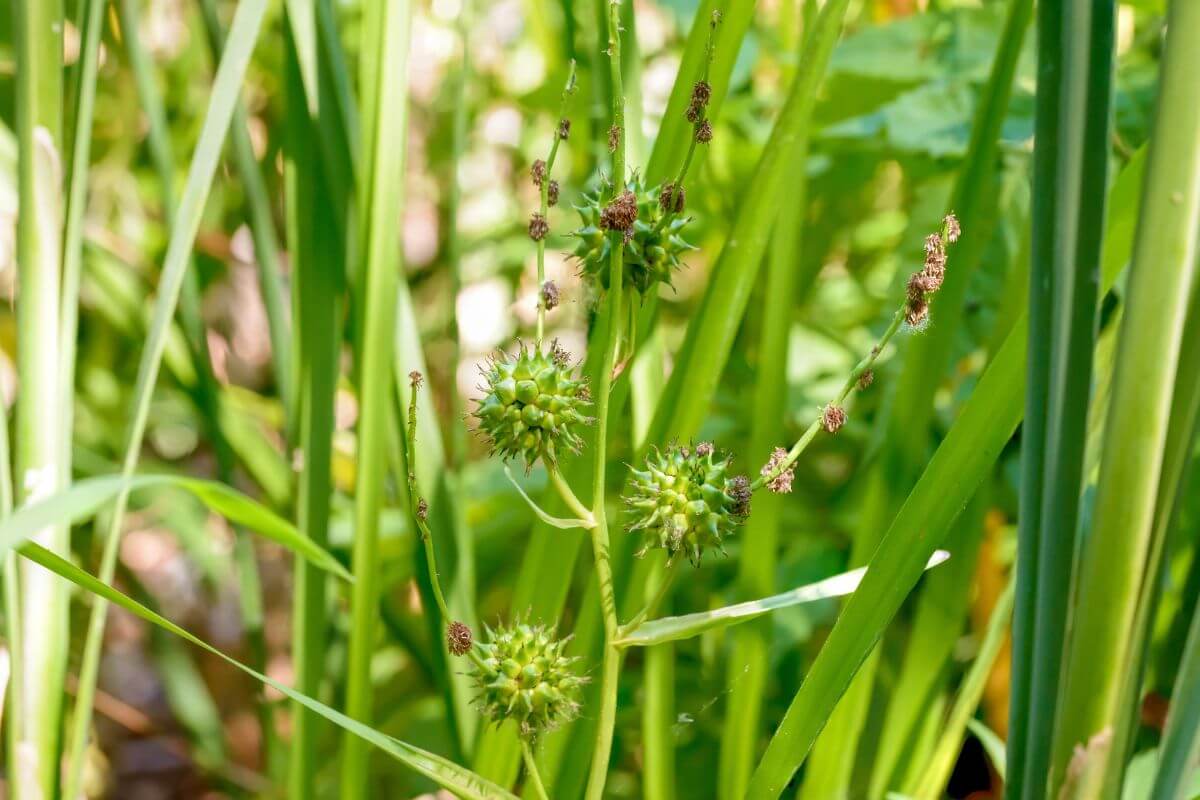
Bur-reeds are aquatic plants of the genus Sparganium.
In North America, 9 species of Bur-reeds colonize ponds, marshes, and streams.
Their leaves grow partially underwater and provide shelter for many aquatic species.
The Giant Bur-reed (S. Eurycarpum) can be 9 feet high and produces summer flowers which then turn into hard brown burrs.
Another main specie is the Narrow-leaved Bur-reeds (S. Angustifolia), with two to four spiny flowers for each stem.
9. Allegheny Chinquapin (Castanea Pumila)
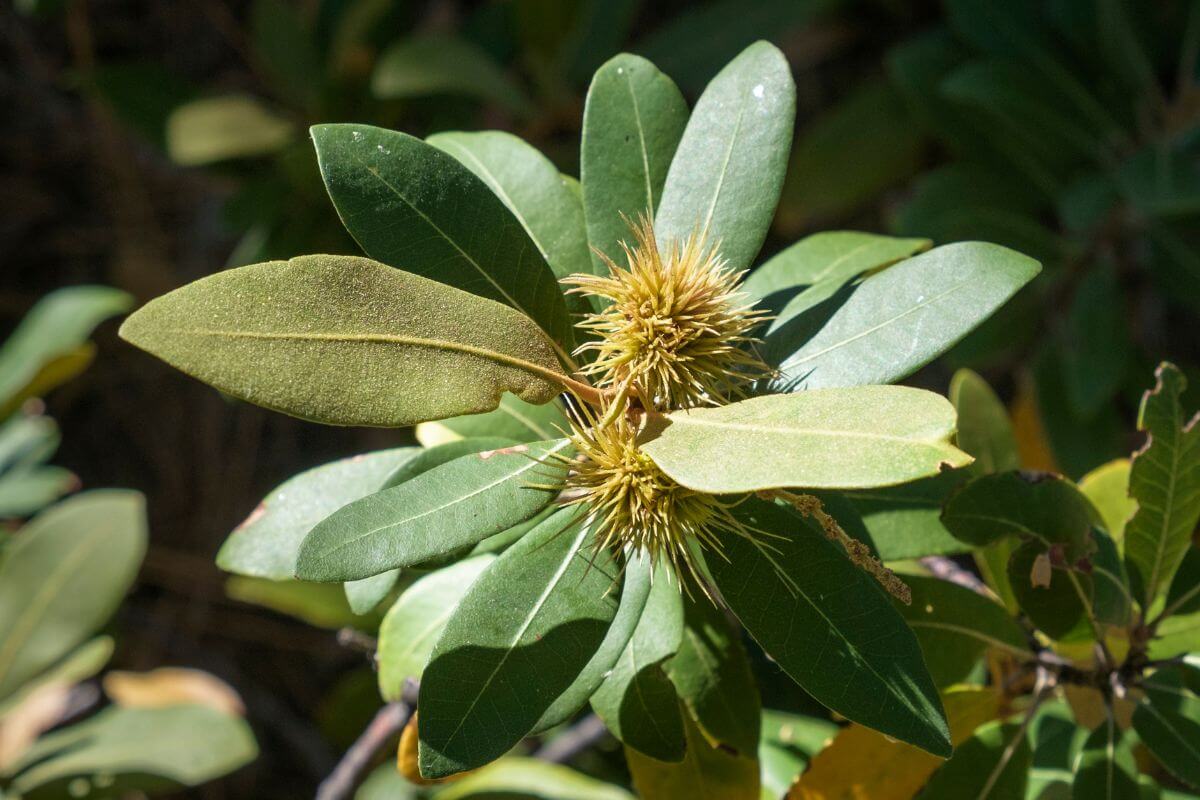
Allegheny Chinquapin is also known as American Chinquapin or Dwarf Chestnut and is a specie of the chestnut tree, native to the United States.
This plant likes dry sandy soil and rocky lands exposed to the sun or in partial shade.
Chinquapins were traditionally used by Powhatans as a source of food and for the treatment of certain conditions.
The leaves were used for headaches and fevers, while the nuts were blanched and dried to be stored and eaten. Squirrels and rabbits also feed from these nuts, while deer graze on the foliage and turkeys use the plant for shelter.
10. Spiny Cocklebur (Xanthium Spinosum)
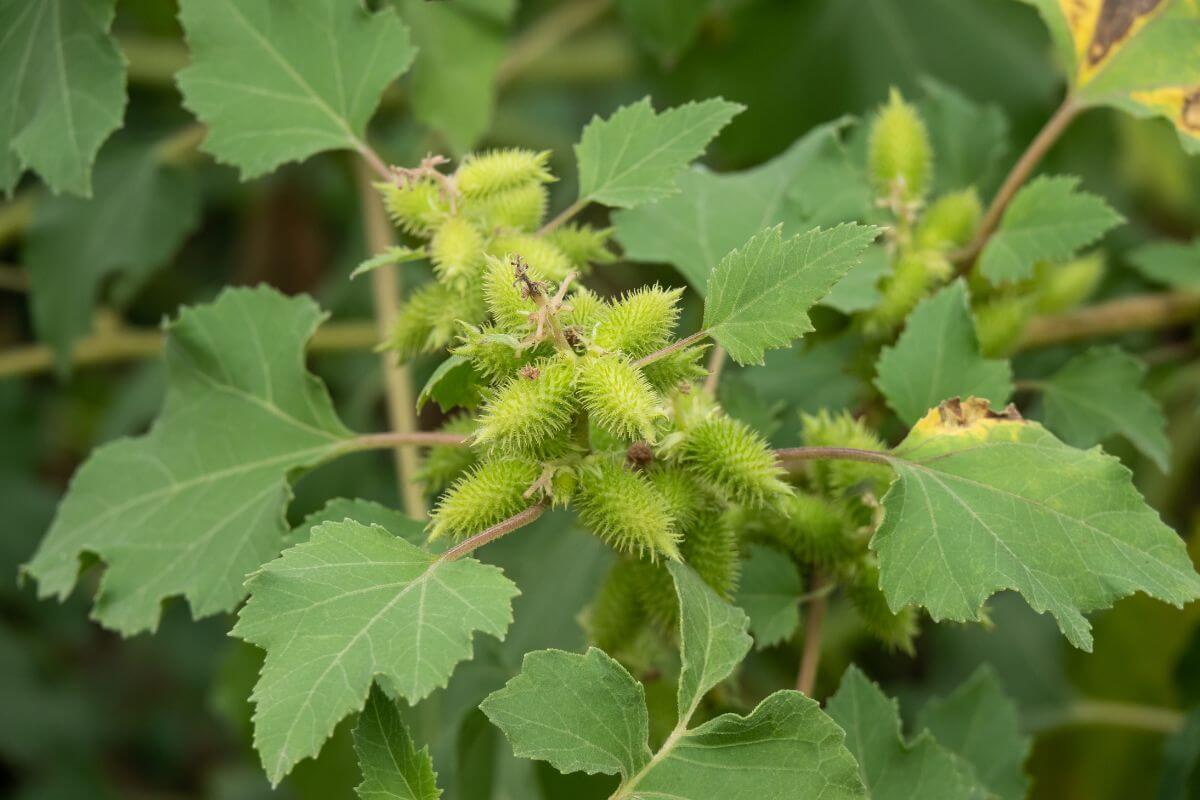
Spiny Cocklebur is similar to common Cocklebur (X. Strumarium) but it can be recognized because of its forked spines at the base of the leaves. Both species are widespread in the US, even if the common cocklebur is more common.
Their burrs get easily tangled in hair and fur and they must be cut out to get rid of them.
A single spiny cocklebur can have as many as 150 burrs. The seeds they contain can survive for a long time in the soil and bloom during the right conditions.
It’s not clear how many varieties of Cocklebur there are and some botanists even argue that there is only one species, X. Strumarium, with regional variations.
11. Bur Buttercup (Ceratocephala Testiculata)
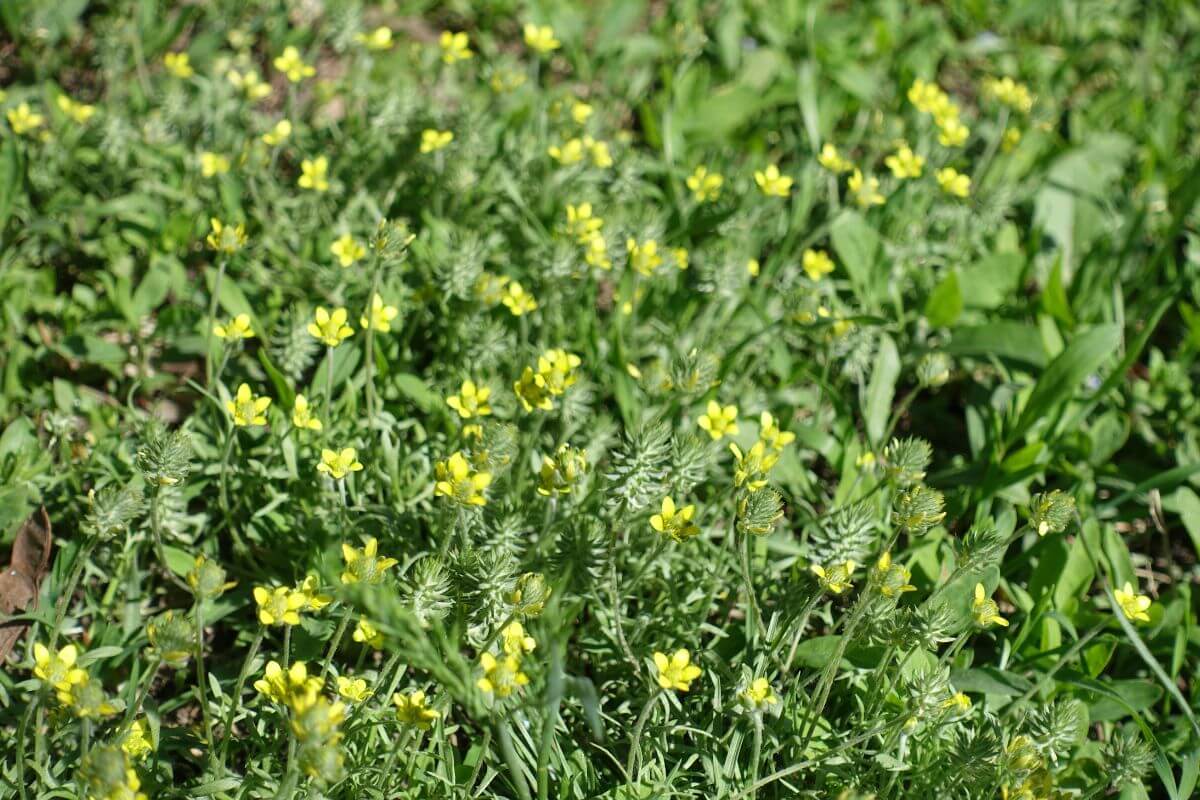
Bur Buttercup is a winter annual that lives a very short life, emerging in the spring and dying in the summer. Within this period, it produces tiny, yellow flowers, followed by small, oval burrs.
They are invasive plants that cause skin irritation and are highly toxic to foraging animals. Sheep can die from eating bur buttercup.
This specie can spread very quickly, forming a thick mat and supplanting other plants, reducing biodiversity.
It thrives in arid areas where it can form populations so large that eradication becomes very difficult.
Final Thought on Plants With Burrs
Plants with burrs can be a nuisance to humans, but they also provide food and shelter for many species of wildlife. Take for example the Burr Medic (Medicago Polymorpha) that helps control weeds.
Plants with burrs are vital parts of their ecosystems, so it’s important to see beyond their disadvantages.
In some cases, they may need to be managed to protect people and livestock from getting hurt by their sharp hooks and spines.
However, chemical control such as pre-emergent herbicides needs to be your last resort. With careful consideration, these plants can be a positive part of any landscape.
If you want to know more about plants for your garden, check out these amazing articles:


Just wanted to say thanks! 💌